Comfort Food: Nostalgia, Culture, and Science

Comfort food, a term that resonates with everyone, regardless of their culinary preferences, is more than just a meal. It's a sensory experience that takes us on a trip down memory lane, wrapping us in a cozy embrace of familiar flavors and a sense of belonging.
At Channelin' Granny, we understand that comfort food is not just about satisfying our hunger, but also about feeding our souls. Our journey into the world of comfort food is guided by a deep respect for culinary traditions from around the world. We believe that every culture has its own unique comfort food that reflects its history, lifestyle, and values. By exploring these diverse cuisines, we hope to bring you a taste of the world's comfort food, right in your own kitchen.
Channelin' Granny is your go-to resource for comfort food recipes that evoke a sense of nostalgia and warmth. We believe that every dish has a story to tell, and we're here to share these stories with you. Our recipes are inspired by traditional cooking methods and ingredients, bringing you the authentic taste of home-cooked meals. Our recipes are a tribute to the timeless appeal of comfort food.
But what exactly is comfort food? Why does it have such a profound impact on our mood and emotions? And how does it vary across different cultures and regions? Join us on this culinary journey as we explore the fascinating world of comfort food. From the history and science behind comfort food to the diverse comfort food recipes from around the world, Channelin' Granny is your ultimate guide to comfort food. Let's embark on a culinary journey to explore the fascinating world of comfort food!
-
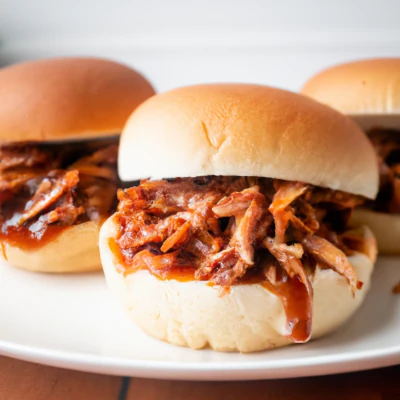
Pulled Pork with Homemade BBQ Sauce
Granny's Indoor Pulled Pork, with its moist, shreddable meat and homemade sweet-tangy barbecue sauce, is a year-round delight. Ideal as a main course, weekend treat, or snack, it guarantees a smile.
-
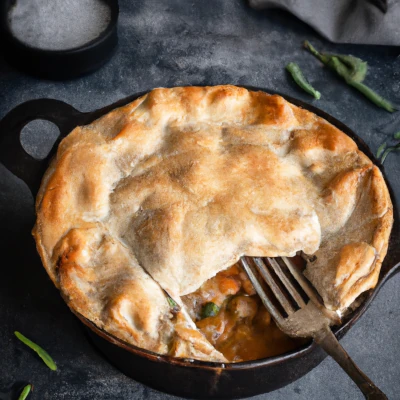
Chicken Pot Pie
Ready for a culinary journey? Explore our chicken pot pie recipe, complete with golden crusts and a vibrant veggie medley. Beginner or pro, follow our guide for a comforting, taste-tingling homemade delight.
-

Granny's Sauerkraut Balls
Delight in the tangy and savory flavors of Granny's Sauerkraut Balls, a perfect blend of sausage and sauerkraut that's sure to be a crowd-pleaser.
-

Zuurkoolstamppot - Sauerkraut Mashed Potatoes
Indulge in Dutch comfort food with our Zuurkoolstamppot recipe. Perfect for chilly evenings, it blends mashed potatoes, sauerkraut, and smoked sausage.
-

Shredded Chicken Sandwich
A Midwestern classic featuring tender poached chicken, a creamy mayonnaise-based sauce, and crisp vegetables. Perfect for a quick lunch or a delightful picnic.
A Symphony of Taste and Emotion
Comfort food, at its core, signifies food that provides a sense of well-being or nostalgia. It's the food that satisfies our cravings and fulfills our desires for something familiar and soothing. These dishes are often associated with a specific memory, person, or place that brings about a sense of comfort and warmth. They are typically high in calories, rich in flavor, and have a certain "stick-to-your-ribs" quality that leaves us feeling satisfied and content. From a steaming bowl of chicken soup to a luscious, cheesy lasagna, comfort foods are as diverse as the people who cherish them.
Comfort foods awaken the senses through taste, texture, smell, and appearance. They are more likely to be sweet or salty than sour or bitter, and they often remind us of fond memories or occasions connected to friends or relatives. Comfort foods provide consolation and a feeling of well-being, and they hold particular appeal when we're feeling lonely or rejected. Indeed, the craving for comfort food is often associated with experiencing strong emotions.
Comfort food preferences are influenced by personal experiences and cultural background. People look for great taste, indulgence, ease of preparation, and sweetness in comfort food. However, any food that provides emotional comfort can be considered a comfort food, making the definition of comfort food as diverse as the people who enjoy them.
-

Baked Mac and Cheese
Macaroni and cheese remains a timeless favorite that brings comfort and satisfaction to people of all ages. Granny's recipe is an explosion of cheesy goodness that keeps everyone reaching for more!
-

Greek Moussaka
Embark on a Mediterranean journey with Granny's Greek Moussaka, a hearty dish layered with eggplant, potatoes, and a rich meat sauce.
-
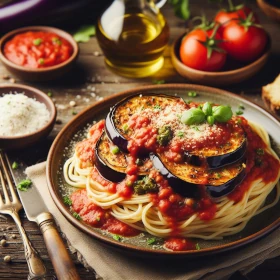
Eggplant Parmesan
Granny's Eggplant Parmesan is a delicious Italian dish that's perfect for any occasion. Each bite is a delightful combination of flavors and textures.
-
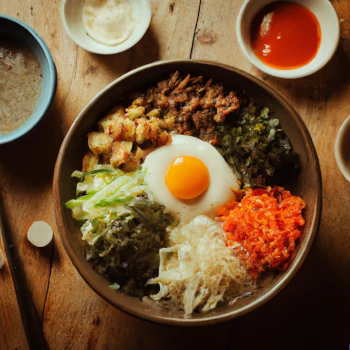
Bibimbap
A delightful Korean rice dish topped with an assortment of seasoned vegetables, gochujang (spicy Korean chili paste), and your choice of protein such as beef, chicken, or tofu. It's a harmonious blend of flavors and textures.
-

Dutch Meatballs
These Dutch meatballs are bursting with flavor thanks to a unique blend of spices. Perfect for a family dinner or as part of a party buffet.
The Historical Tapestry of Comfort Food
The concept of comfort food has been around for centuries. Each culture has its own set of comforting dishes that provide a sense of nostalgia and emotional comfort. The term "comfort food" was first used in 1966, and it has been a part of our culinary lexicon ever since. Since then, comfort food began to gain recognition in the United States as a specific type of cuisine that evokes a sense of nostalgia and comfort.
However, the idea of food as a source of emotional comfort can be traced back to ancient times. For instance, in ancient Rome, a dish called "puls," a type of porridge made from spelt, was considered a staple comfort food. This dish, simple yet nourishing, provided the Romans with the energy they needed while also offering a sense of familiarity and comfort.
The concept of comfort food is deeply rooted in our history and biology. Our ancestors, driven by the need for survival, were drawn to foods that were high in calories and easy to digest. These foods, which provided the energy needed to survive in harsh conditions, were the earliest forms of comfort food. Over time, as societies evolved and food became more than just a means of survival, the emotional aspect of comfort food began to take shape.
In the modern era, comfort food has taken on a new significance. It's no longer just about survival or even nutrition. Instead, comfort food is about the emotional connection we have with certain foods. It's about the memories and feelings these foods evoke. When we eat comfort food, we're not just feeding our bodies; we're feeding our souls.
-

Granny's Classic Cornbread
Experience the timeless taste of Granny's Classic Cornbread, a tender and golden delight that complements any meal.
-

Granny's Sweet Potato Fries
Indulge in the sweet and salty delight of Granny's Sweet Potato Fries, a perfect blend of crispy exterior and soft interior that's sure to satisfy your cravings.
-

Granny's Flour Tortillas
Learn how to make soft and delicious flour tortillas at home with this easy recipe. These homemade tortillas are perfect for wraps, tacos, and more!
-

Baked Beans
Sweet and tangy baked beans make a great addition to a cookout. White beans with BBQ sauce, molasses, brown sugar, and maple syrup, create a taste sensation that's hard to resist.
-

Homemade Quiche
A classic quiche with a buttery, flaky crust and a creamy, flavorful filling. Perfect for breakfast, brunch, or even dinner.
The Science behind Comfort Food
The allure of comfort food lies not just in its rich flavors and satisfying textures, but also in the intricate science that underpins our cravings. When we indulge in these familiar, hearty dishes, our brains release a cocktail of chemicals, including dopamine and serotonin, neurotransmitters associated with feelings of happiness, pleasure, and well-being. This biochemical response is a key reason why we often turn to comfort foods during times of stress, sadness, or emotional upheaval – they literally make us feel better.
The act of eating, particularly foods we associate with positive memories or feelings, can also be a form of self-care. This is because the consumption of comfort food can provide a sense of comfort and reduce feelings of stress and anxiety. This psychological aspect of comfort food is deeply intertwined with our emotional health and well-being.
Moreover, the science of comfort food extends to our sensory experiences. The tastes, smells, and textures of these foods can trigger powerful memories and emotions, further enhancing their comforting effects. For instance, the aroma of a freshly baked apple pie might transport you back to your grandmother's kitchen, while the taste of a creamy mashed potato might remind you of a cherished holiday dinner.
The science behind comfort food also involves our body's physiological responses. Comfort foods are often high in carbohydrates, which can lead to an increase in serotonin levels in the brain. Serotonin is a neurotransmitter that contributes to feelings of well-being and happiness. Additionally, these foods are typically high in fats and sugars, which can stimulate the brain's reward system, leading to feelings of pleasure and satisfaction.
However, it's important to note that while comfort foods can provide temporary relief from negative emotions, they should not be relied upon as a primary coping mechanism. Overindulgence in these foods, particularly those high in fats and sugars, can lead to health issues such as obesity, heart disease, and diabetes. Therefore, it's essential to enjoy comfort foods in moderation and as part of a balanced diet.
-

Granny's Spicy Jalapeño Poppers
Experience a flavorful adventure with Granny's Spicy Jalapeño Poppers, a perfect balance of heat from the jalapeños and creamy, tangy cheese.
-

Granny's BBQ Chicken
Relish the smoky and savory flavors of Granny's BBQ Chicken, a perfect feast for any mealtime, featuring juicy chicken breasts seasoned to perfection.
-

Classic Hamburgers
This Classic Burger is a delightful and juicy treat, perfect for a summer barbecue. The rich and savory flavors of this burger make it a perfect meal to enjoy during the summer months.
-

Sweet Potato Red Lentil Curry
This comforting sweet potato red lentil curry brings together the warmth of Thai spices with the heartiness of sweet potatoes and red lentils, all enveloped in a luxuriously creamy coconut milk base.
-

Egg Fried Rice
A quick and comforting dish featuring fluffy rice, scrambled eggs, and flavorful aromatics. A versatile meal perfect for using leftover rice.
Granny's Homestyle Cooking
Comfort food, a universal language of love, warmth, and satisfaction, takes on different forms around the world, reflecting the diverse cultures and cuisines of different countries. From the intoxicating aroma of a hearty lasagna in Italy, layered with rich béchamel sauce and a tangy tomato meat sauce, to the irresistible taste of Dwenjang Jjigae, a savory soybean paste stew in Korea, comfort food recipes have a way of making us feel at home no matter where we are.
Here at Channelin' Granny, we bring you the most heartwarming comfort food recipes from around the world. Our recipes are a tribute to the timeless appeal of comfort food. We delve into the basics of these dishes, providing you with effortless recipes packed with flavor. From cheesy pasta dishes to creamy chicken pot pies, we've got you covered.
Join us on this culinary journey as we explore these classic comfort food recipes that bring joy and comfort to our tables. Whether you're looking for a quick dinner idea or a dish to serve at your next family gathering, our recipes are sure to satisfy. We're here to help you recreate the luscious tastes of your favorite comfort foods in your own kitchen.
-

Granny's Cottage Cheese Pancakes
Start your day with Granny's Cottage Cheese Pancakes, a delightful blend of creamy cottage cheese and fluffy pancakes.
-

Granny's Hearty Pasties
Enjoy a taste of Michigan's heritage with Granny's Hearty Pasties, a savory pastry filled with a robust blend of meat and vegetables.
-
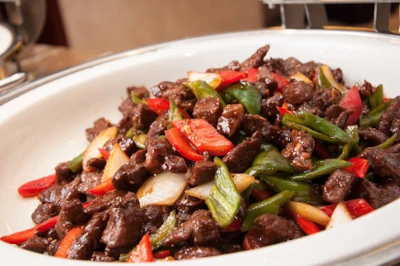
Granny's Pepper Steak
Welcome to Granny's kitchen, where we're serving up a taste of the South with our Pepper Steak. This savory dish is a celebration of the simple flavors of tender steak and crisp peppers.
-
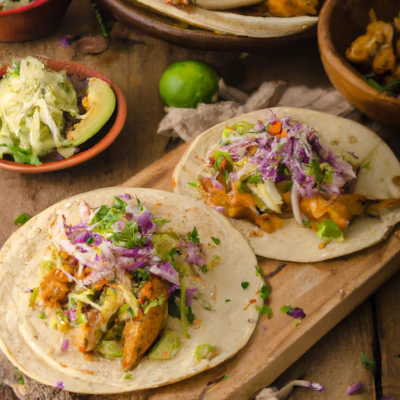
Fish Tacos
These Fish Tacos with Chipotle Slaw are a flavorful fiesta, perfect for a fun dinner at home. The vibrant and zesty flavors of this dish make it a perfect meal to enjoy during the warmer months.
-

Clam Fettuccine
A delightful pasta dish combining tender fettuccine with succulent clams in a buttery herb sauce, enriched with fresh parsley and celery leaves for the perfect seafood pasta experience.
Thanksgiving Traditions
Thanksgiving comfort food embodies the heartwarming essence of the holiday, inviting friends and family to gather around a table adorned with cherished dishes that evoke nostalgia and warmth. From the rich aroma of roasted turkey to the creamy goodness of mashed potatoes, each bite is a flavorful journey that transcends mere sustenance, connecting generations through a shared love for tradition and culinary delight.
At the heart of this feast lies the iconic roasted turkey, its golden skin promising succulent, juicy meat that becomes the centerpiece of the Thanksgiving table. Accompanied by velvety mashed potatoes, perfectly seasoned stuffing, and a luscious blanket of gravy, these classics form a symphony of flavors that transport us to familiar, comforting landscapes.
The holiday spread extends its embrace to include an array of side dishes, from cranberry sauce with its sweet-tart burst to the earthy warmth of sweet potato casserole topped with pecans or marshmallows. Green bean casserole, with its crispy onion topping, and buttery dinner rolls round out the ensemble, adding layers of texture and taste to the communal celebration.
Thanksgiving comfort food isn't just about the dishes themselves; it's about the shared moments, laughter, and stories exchanged around the table. It's a reminder that, in the midst of our busy lives, there's solace in coming together to savor the familiar, to appreciate the culinary heritage that ties us to our roots, and to express gratitude for the simple joys found in the company of loved ones and a bountiful spread of soul-warming delights.
-
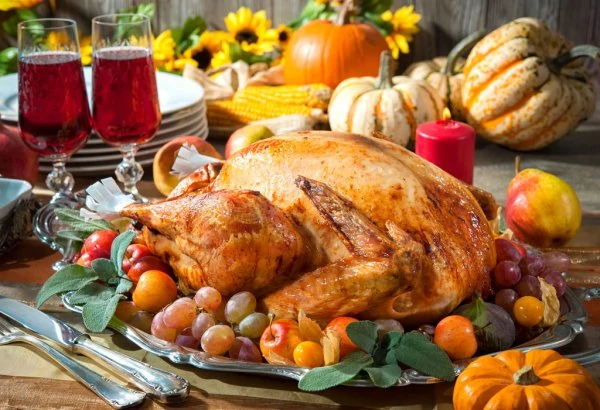
Thanksgiving Turkey
Roasting a perfect turkey is the centerpiece of any Thanksgiving feast. With a crispy, golden-brown skin and tender, flavorful meat, this recipe will make your holiday dinner an unforgettable experience.
-

Sweet Potato Casserole
With a harmonious blend of sweet potatoes and a delectable topping, this recipe will become a cherished part of your holiday tradition.